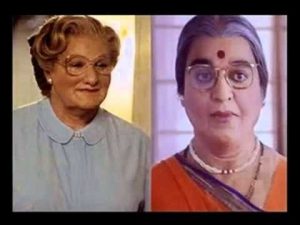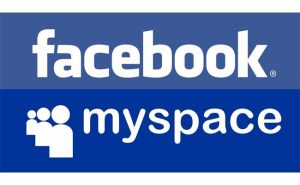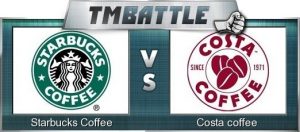Imitation is a practical route to profitability
 Coca Cola imitated RC Cola in emulating its diet cola product; Visa and MasterCard copied the credit card concept from Diners Club. The most famous example of imitation is: McDonalds took the fast food chain concept from White Castle. A good number of businesses/entrepreneurs replicate another one’s technology, perception, idea or strategy. But, when an enterprise imitates a product, idea or strategy it upgrades the imitation creatively by investing resources and skills. Enterprises just don’t imitate they disrupt the innovator by reducing the product cost, the differentiation, the look, the benefits etc. This exercise is very innovative. So, inventors create the technology, but entrepreneurs turn it into economic value.
Coca Cola imitated RC Cola in emulating its diet cola product; Visa and MasterCard copied the credit card concept from Diners Club. The most famous example of imitation is: McDonalds took the fast food chain concept from White Castle. A good number of businesses/entrepreneurs replicate another one’s technology, perception, idea or strategy. But, when an enterprise imitates a product, idea or strategy it upgrades the imitation creatively by investing resources and skills. Enterprises just don’t imitate they disrupt the innovator by reducing the product cost, the differentiation, the look, the benefits etc. This exercise is very innovative. So, inventors create the technology, but entrepreneurs turn it into economic value.
In the entertainment business an imitation or copy is called as ‘remake.’ The Bollywood hit ‘Chachi 420’ is a copy of ‘Mrs. Doubtfire’ (1993) or a ‘Pyar to hona hi tha’ is a remake of ‘French kiss’ (1995). Similarly, ‘A Common Man’ (2013) is a remake of Bollywood’s ‘A Wednesday’ (2008); ‘Fear’ (1996) is a remake of ‘Darr’ (1993). Some call it ‘inspiration’, many do it unabashedly. Music, screenplay, story, fight scenes, themes call it anything, in entertainment industry imitation or copying is passable.
No sooner an innovation ensues and becomes successful; it is out there for imitation. Many emerging and fast-growing nations have progressed from being almost pure imitators be it technology or processing. They have added value to the original products very skillfully and have grown better products. Japan followed that path after World War II, as did South Korea a decade or so later. Even if Japanese companies are often accused of taking part in imitation warfare, it should be acknowledged that their international market success actually stimulated many European and American enterprises to study the skills and capacity behind their results in order to re-engineer their procedures and critical processes. It is without doubt that imitating a product is easier than imitating a process or a procedure. Today, China appears on a similar course. When a new product/service gets diffused, it possibly goes a stage further than its originality, this happens because people do not just invent things, such as mobile or computer, they come up with ideas for new services that consumers need and ways of providing them in a product. For example, the mobile phone shrunk the market of cameras and radios.
Many flourishing entrepreneurs have grown their businesses by reproducing what someone else has done, only bettering it by enhancing it further. Imitation is thus much trickier job than we imagine. Imitation may be extended to products and services generated by the innovator, as well as to its technologies, procedures, processes, organizational models and market strategies. What has globalization done? It reduced barriers to trade and has spread innovation. If a country opens itself to foreign imports, its domestic companies are likely to come under pressure from more sophisticated competitors. That’s upsetting, but the competition can also push the domestic companies to upgrade technologies by imitating domestic or foreign rivals. That can ultimately make them more productive in their own right by way of incrementing an existing product.
 In some cases the duplicate stands out because of its quality; at times, the price of imitation is lesser than the original product. Hats off to Mark Zuckerberg; he copied the social networking idea from Friendster – the social gaming site of 2002 and Myspace and Linkedin in 2003. But, Zuckerberg’s Facebook became a super duper hit because Facebook focused on real personal information and social connections, leveraging a genuine network effect, starting with college communities, while MySpace did not. Facebook developed several features such as the news feed and photo tagging, which were novel and kept people coming back to the site. And, Facebook built a developer and technology platform for other social applications becoming the leader in the social networking on Internet.
In some cases the duplicate stands out because of its quality; at times, the price of imitation is lesser than the original product. Hats off to Mark Zuckerberg; he copied the social networking idea from Friendster – the social gaming site of 2002 and Myspace and Linkedin in 2003. But, Zuckerberg’s Facebook became a super duper hit because Facebook focused on real personal information and social connections, leveraging a genuine network effect, starting with college communities, while MySpace did not. Facebook developed several features such as the news feed and photo tagging, which were novel and kept people coming back to the site. And, Facebook built a developer and technology platform for other social applications becoming the leader in the social networking on Internet.
Similarly, in the early 1980s, the two Steves who had founded Apple Computer – Steve Jobs and Steve Wozniak visited a computer research center run by Xerox in Palo Alto, Calif at “Xerox PARC,” as the laboratory was called. One of their friends who worked at Xerox took them on a historic tour. The two Steves spotted an odd computer at PARC called the ‘Star’. Practically nobody remembers the Star these days, but the guys from Apple gave it a place in history. It made such an impression on them that they decided they had to make a computer of their own that worked the same way. And, that’s how Apple was born.
 Imitation concerns not only products, but also strategies, organization models and processes that bring market success to the innovator. For instance, activities related to competitive intelligence and benchmarking are undertaken to assess the market drive capacity of rivals or excellent enterprises from other industries in order to copy them. It is feasible to imitate an innovation by modifying marginal elements, developing a different design, reconfiguring the product, using new alternative materials or using different manufacture processes. From this point of view, the English coffee-shop chain “Costa” represents a marginal imitation of the innovator “Starbucks.”
Imitation concerns not only products, but also strategies, organization models and processes that bring market success to the innovator. For instance, activities related to competitive intelligence and benchmarking are undertaken to assess the market drive capacity of rivals or excellent enterprises from other industries in order to copy them. It is feasible to imitate an innovation by modifying marginal elements, developing a different design, reconfiguring the product, using new alternative materials or using different manufacture processes. From this point of view, the English coffee-shop chain “Costa” represents a marginal imitation of the innovator “Starbucks.”
Imitation does not necessarily entail clones of goods, or illegal counterfeits. The fact is that, the imitation can also be legal and very positive for the firm development. In the globalized markets consumers identify different categories of imitations. They are product pirates, forged clones, or knockoffs, design copies, creative variation and technological leapfrogging. Bogus and pirating are pure duplicating imitations and are illegal. Counterfeits are copies that resemble an original brand name but of low quality. In contrast, knockoffs are legal products, closely copying the original products in the absence of copyrights, trademarks and patents but sold with their own brand names at far lower prices. Knockoffs often present a better quality than original products. So, when it is legal, duplicative imitations are a bright strategy for the firms with low wages and mature technology.
In fact, design copies, market adaptations, technological leapfrogging, and adaptation to another industry are creative imitations. It requires lot of improvement. Design copies follow the market leader but live on the market with their own brand name and specific engineering features. Product adaptations are therefore innovative, with improvements inspired by existing products. Technological leapfrogging gets advantage with newer technology and enables the imitator to leapfrog the innovator. Imitating an original product or design and taking it to another industry takes on the application of innovations in a certain industry for use in another. In general, creative imitations are focused on generating imitative products, but with new features.
Outsourcing was introduced in Japanese companies and in ‘keiretsu’ alliances in particular, with the creation of very close relationships between companies and suppliers. Outsourcing spread after the Second World War, becoming a key global policy in all industrialized countries in the 1990s.
 Numerous firms have created superior innovations that have revolutionized lifestyles of people all over the world; Frigidaire introduced refrigeration systems, Carrier brought air conditioning, Otis is synonymous with elevators and Nestlé with powdered milk. An original product or service can give the firm the first-mover advantage. Such firms do enjoy the leading position, and firms can enjoy skimming prices and generate profits; they can even go for low price strategy to rapidly acquire a high market share by which way they can raise barriers to the new entrants.
Numerous firms have created superior innovations that have revolutionized lifestyles of people all over the world; Frigidaire introduced refrigeration systems, Carrier brought air conditioning, Otis is synonymous with elevators and Nestlé with powdered milk. An original product or service can give the firm the first-mover advantage. Such firms do enjoy the leading position, and firms can enjoy skimming prices and generate profits; they can even go for low price strategy to rapidly acquire a high market share by which way they can raise barriers to the new entrants.
 Global breakthrough product innovation generates new, formerly non-existent product classes, with innovative products and price levels that have no comparison among alternative products. Dell Inc. and Wal-Mart have demonstrated the value associated with their business models. Dell and Wal-Mart’s business models are unusual, advanced, and require supporting processes that are hard for competitors to replicate – at least in the U.S. Elsewhere, new entrants have adopted key elements of the model and pre-empted Wal-Mart, as Steven Tindall has demonstrated it so ably in New Zealand with ‘The Warehouse’. But, the fact needs to be appreciated that both Dell and Wal-Mart have also constantly adjusted and improved their processes over time. Similarly copying Google’s business model is very difficult. The business model developed around Google’s product/service innovation required heavy investment in computing power as well as in software. Google writes its own software and builds its own computers. This is remarkable. It takes advantage of its considerable computing power to count words and links, and to combine information about words and links. Inventors must thus make ‘copying’ impracticable.
Global breakthrough product innovation generates new, formerly non-existent product classes, with innovative products and price levels that have no comparison among alternative products. Dell Inc. and Wal-Mart have demonstrated the value associated with their business models. Dell and Wal-Mart’s business models are unusual, advanced, and require supporting processes that are hard for competitors to replicate – at least in the U.S. Elsewhere, new entrants have adopted key elements of the model and pre-empted Wal-Mart, as Steven Tindall has demonstrated it so ably in New Zealand with ‘The Warehouse’. But, the fact needs to be appreciated that both Dell and Wal-Mart have also constantly adjusted and improved their processes over time. Similarly copying Google’s business model is very difficult. The business model developed around Google’s product/service innovation required heavy investment in computing power as well as in software. Google writes its own software and builds its own computers. This is remarkable. It takes advantage of its considerable computing power to count words and links, and to combine information about words and links. Inventors must thus make ‘copying’ impracticable.
Finally, customers don’t just want products; they want solutions to their perceived needs. They are not concerned about originality or replication of a product or service. This fact has made imitation not only more bountiful than innovation; it is actually more established road to business growth and profits.















































